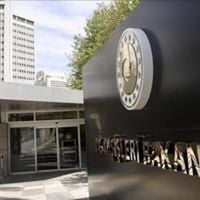In a bold diplomatic move that could reshape the future of southern Syria, the governments of Syria, Jordan, and the United States have announced a comprehensive roadmap aimed at restoring stability and fostering reconciliation in the embattled province of Suweida. The agreement, revealed at a press conference in Damascus on September 16, 2025, marks a rare instance of multilateral cooperation in a region long plagued by conflict, external interference, and deep-seated mistrust between communities and the central government.
The new plan, hammered out in a series of talks involving Syrian Foreign Minister Asaad Hassan al-Shibani, Jordan’s Foreign Minister Ayman Safadi, and US Special Envoy to Syria Tom Barrack, seeks to address the escalating crisis in Suweida—a province distinguished by its Druze majority, Christian minorities, and pockets of Sunni Arabs. According to Shafaq News and The Syrian Observer, the roadmap outlines measures for security, accountability, and a broader reconciliation process, all while navigating the complex web of local, regional, and international interests at play.
At the heart of the agreement is a commitment to Syria’s unity. The plan explicitly rejects autonomy or secessionist narratives, affirming Suweida’s indivisible place within the Syrian nation. Asaad al-Shibani described the roadmap as a "clear vision" for protecting civilians and rebuilding trust between the state and local communities. "It serves the interest of all Syrians," he declared, promising justice for those responsible for violence while opening channels for dialogue. Safadi was equally emphatic about the deal’s regional significance, stating, "The security of southern Syria is the security of Jordan," and condemning recent Israeli strikes on Syrian territory.
The US, for its part, has cast the agreement as historic. Special Envoy Tom Barrack pledged Washington’s support to ensure the plan’s success, describing Syria as "a young government seeking prosperity" and reaffirming America’s commitment to fostering tolerance and security. The roadmap, he said, represents a pragmatic shift from the region’s reliance on unilateral military solutions to a more inclusive, step-by-step approach anchored in dialogue and oversight.
But what, exactly, does the roadmap entail? According to details published by The Syrian Observer, the agreement is built on a series of foundational principles and actionable steps. Chief among them is the establishment of an independent international committee to investigate recent violence in Suweida, with Damascus pledging to prosecute violations against civilians and property. Humanitarian aid will continue to flow through the United Nations and partner states, while Jordanian and US support will help fund critical infrastructure and healthcare services.
Security arrangements are another cornerstone of the plan. Interior Ministry forces are to be deployed along the Suweida–Damascus highway to secure vital trade routes, while civilian fighters will withdraw from administrative boundaries. Displaced villagers are to return home under the supervision of trained police units. The roadmap also provides for prisoner exchanges and family reunifications in coordination with the International Red Cross, and calls for the reconstruction of affected villages with funding from all three partners.
Recognizing the importance of social cohesion, the roadmap promotes a national narrative of diversity and equality, with legislation against hate speech and Jordan facilitating dialogues between Suweida communities and Bedouin tribes. Administrative reforms are on the table as well, including the establishment of a local police force comprising all sects under the leadership of Suweida native Sulaiman Abdul Baqi, who was recently appointed security director. Civil institutions will be reactivated, and a provincial council made up of professionals, academics, and community elders will help guide the reconciliation process.
Oversight is to be provided by a joint Syria–Jordan–US mechanism, with the United Nations involved in monitoring implementation. The roadmap is sequenced and pragmatic, prioritizing immediate de-escalation through ceasefires and aid before tackling deeper reforms such as local governance and policing. This marks a significant departure from the Syrian government’s previous reliance on military incursions—such as the one conducted in mid-July 2025, which only deepened local resentment and distrust.
Yet, despite its ambitious scope and international backing, the roadmap has not been universally embraced. The most vocal opposition has come from Suweida’s Supreme Legal Committee, aligned with prominent Druze cleric Hikmat al-Hijri. On September 17, the committee issued a scathing statement rejecting the plan as "riddled with contradictions" and a covert mechanism for imposing "guardianship" over the province. They criticized the reliance on Syria’s judiciary for accountability—calling it politicized and incapable of delivering fair justice—and dismissed the proposed local councils and joint forces as divisive constructs. Most provocatively, the committee asserted Suweida’s right to self-determination, including the possibility of full independence, and called for international oversight that bypasses Damascus.
The committee’s objections highlight the deep internal rifts that continue to bedevil reconciliation efforts. As noted by political analyst Hassan al-Dughaym and former Jordanian minister Amin al-Mashagba, an estimated 90 to 95 percent of Suweida’s population supports reintegration with Syria, but a vocal minority of hardliners is amplifying separatist rhetoric and potentially impeding progress. "These are the posturing of de facto authorities," Dughaym said, advocating for a gradual and culturally sensitive implementation of the roadmap.
External actors further complicate the picture. Israel’s alleged support for armed militias in Suweida has fueled separatist sentiment and obstructed reconciliation, while Jordan’s mediation—bolstered by tribal ties with both Druze and Bedouin communities—offers a stabilizing counterweight. Success, analysts argue, will depend on coordinated efforts among Syria, Jordan, the US, and the UN, with priorities including deconfliction, securing transport routes, humanitarian access, and re-establishing local institutions.
Initial signals suggest a more inclusive approach than in the past. The appointment of Sulaiman Abdul Baqi as security director, for instance, is seen as a move to empower local actors and weaken separatist narratives. Jordan’s influence, described as a "strong card," stems from its social ties and alignment with US diplomacy, which could also help contain Israeli activities through new security arrangements. The roadmap’s emphasis on equity, justice, and oversight offers a pathway towards healing and may serve as a template for post-conflict pluralism in Syria.
Still, pessimism lingers. If local rejections gain traction—fueled by unresolved grievances or external sabotage—the roadmap could entrench divisions and prolong instability. The Suweida crisis remains acute: residents face unpaid salaries, power outages, fuel shortages, and disrupted education. Even as heavy weaponry is reportedly withdrawn from the region in line with a Syria–Israel agreement, daily hardships persist. On Tuesday, security forces detained a bus driver and assistant at a local checkpoint, prompting the only operating transport company to suspend services, underscoring the fragility of the situation.
The Suweida roadmap is, at its core, a high-stakes gamble—an attempt to blend accountability with reconciliation, and to reclaim a province drifting toward fragmentation. Whether it succeeds will depend not only on the resolve of Damascus, Amman, and Washington, but on their willingness to accommodate local aspirations and deliver tangible improvements. For now, Suweida stands at a crossroads, its future hanging in the balance between hope for unity and the persistent pull of division.


